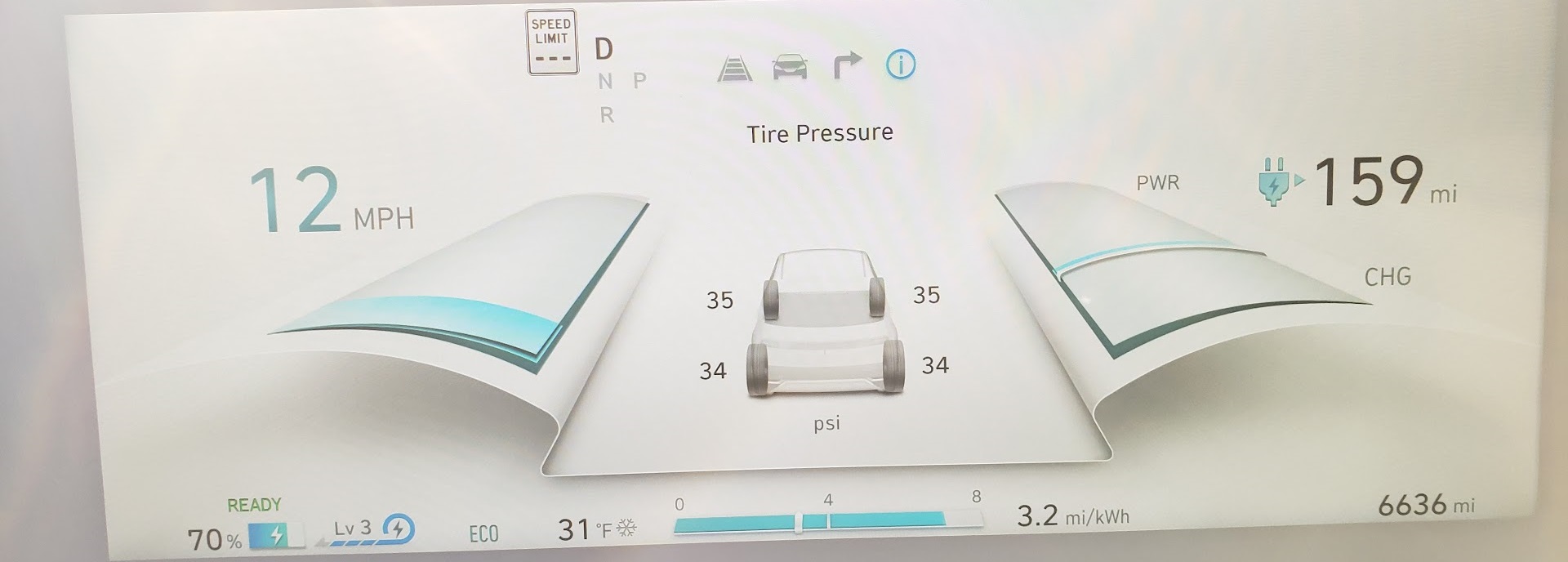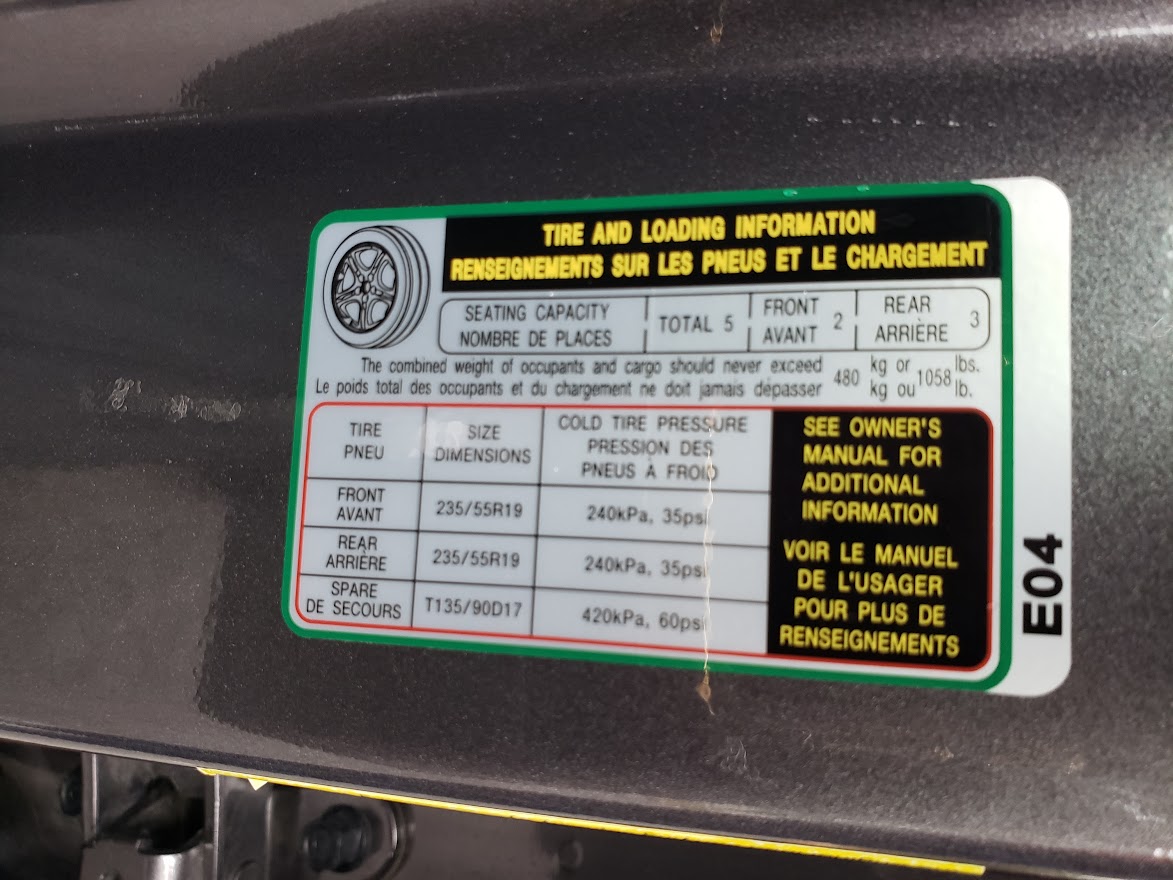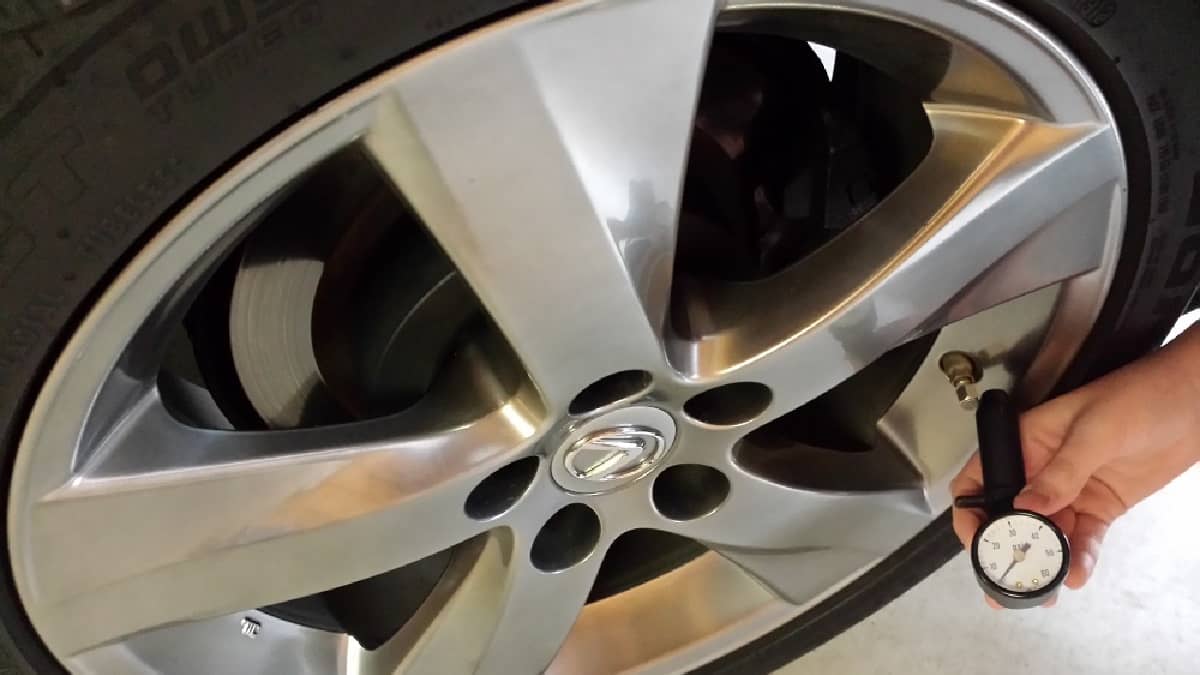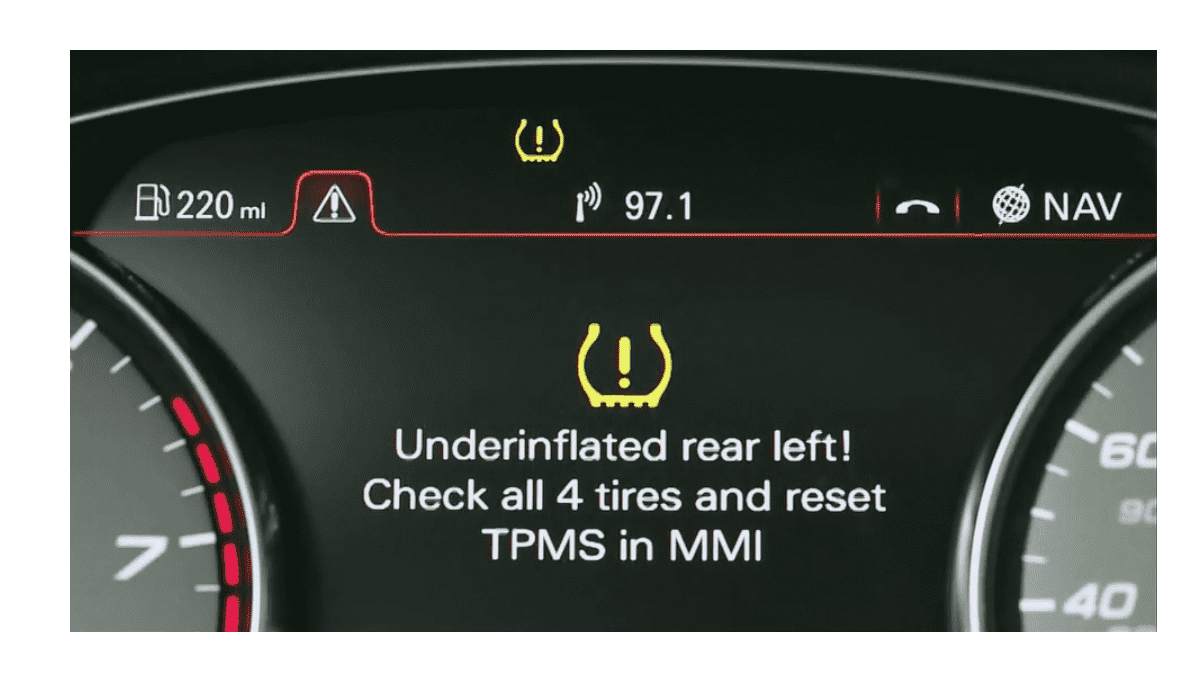It is quite common for a tire pressure warning light, also known as a tire pressure monitoring system (TPMS) light, to come on as temperatures drop. While you may certainly have a flat tire, and we will tell you how to check, it could simply be physics at work. Gasses change pressure with changing temperatures when they are enclosed in a fixed volume. All gasses, regardless of whether you use compressed air or nitrogen in your tires. If temps drop low enough, the pressure can fall below the setpoint, at which point the sensors will report the drop to your TPMS computer, and it will let you know there is an issue with a warning light.
Related Story: One Winter Prep Item You Must Not Skip With An Electric Vehicle
Your TPMS Light Comes On - First Thing To Do
If your TPMS tire pressure warning light just came on, you should pull to the closest safe place and investigate the issue. Driving on a flat tire is not only unsafe, but it renders the tire unrepairable due to sidewall damage. Find a place to pull over where you can safely park.
 How To Identify the Problem When a TPMS Light Comes On
How To Identify the Problem When a TPMS Light Comes On
Once you’ve pulled over, the first step is to determine if the low pressure is in all four of your tires or just one. Your car may tell you the pressures, or it may tell you which wheel or wheels are sending the low pressure message. Most cars today are equipped with a display that can tell you the pressure in each tire by displaying it on your instrument cluster behind the steering wheel or via the main infotainment screen. Your owner's manual will help you, but we can make some suggestions.
Check out the menus available to you on your steering wheel that control the gauge cluster first. Toggle through the options to see if you can get the tire pressures to show. If not, try the main infotainment screen. Start with either Informaiton, Maintenance, or System/Vehicle menus to see if they lead you to a tire pressure display.
If you can find the pressures in each wheel on one of your screens, see if they are all about the same within a psi or two. If they are, that is a good sign. If one tire is displaying a pressure 5 psi or more lower than the other three, it is likely you have a puncture and are about to need roadside assistance.

If all four are lower than the setpoint suggested by the manufacturer of your car, you can find the closest place that offers compressed air and fill up. Meaning filling up to the setpoint, not what is printed on the tire. Your driver’s side door jam has the pressure settings listed, as does your owner’s manual. If you can’t do this yourself, get help from any local tire shop or mechanic. Just tell them the situation.
 What To Do If Your Car Won’t Tell You the Pressure In Each Tire
What To Do If Your Car Won’t Tell You the Pressure In Each Tire
Some vehicles don’t display the tire pressure in each wheel. In this case, you will need to use a pressure gauge to check the pressure. If you have one and know how it works, use it and see if you have one low tire, or four. It is often impossible to use your eyes to see if you have a low tire. Modern low-profile tires all look pretty much flat to the untrained eye.
If you don't have a gauge or don’t know how to use one, call roadside assistance and have the tire pressures checked. Driving without knowing if you have a flat is dangerous and unwise for other reasons. Now, if you are within eyeshot of a place that can help you, like a tire retailer, independent mechanic’s shop, Costco, auto repair chain, or any dealer of any brand, you can simply pull into that place and ask nicely for help finding out if you have a flat, or if your tires just need to be topped off. Driving slowly and very carefully for a mile or two is reasonable, even if a flat is starting.
Related Story: Twelve Electric Vehicles You Can Buy With a Spare Tire In 2023
What To Do If You Find You Have A Damaged Tire
If you see visible damage to a tire, call roadside assistance and check to see if your vehicle has a spare tire. If you do, your roadside assistance company, be it AAA, your insurer, or your vehicle warranty provider, can mount it, and you can be on your way and get the tire looked at ASAP. Almost all spares today are temporary and intended to take you home, to work, or to a tire store, and not much more. Read your manual to see what it suggests.
No spare tire? Shame on you for buying a car without one. You are very likely about to be towed if you have damaged a tire. It is now time to start thinking about where you want your car to be towed for tire service. Some cars have puncture repair kits. Your manual can explain how it works, or your roadside assistance provider may try it. Puncture repair kits are not intended to repair a punctured tire permanently; just get you to the tire store.
Why Do Tires Deflate In Fall?
When a gas is cooled in a fixed enclosure like the inside of a tire, its pressure drops. This is physics, and all gases do this. Tires lose roughly one psi of pressure for every 10-degree Fahrenheit drop in temperature. So, if your tires were set to 35 psi when it was 80 F and now it is 30 F, your tires have lost 5 psi or so. Tires also have increased pressure as temps rise. While compressed air and nitrogen can escape a tire, gases generally don't migrate through the tire wall in any meaningful way. Tires with slow leaks do lose air, but tires don't “leak” air through the tire wall in any measurable way within the span of your oil change visits, at which time your mechanic will check and top off any tire that needs more pressure.
Will Nitrogen Fix This Law of Physics?
Nitrogen has no meaningful benefits over compressed air in passenger vehicle tires. One benefit it most definitely does not have is the ability to maintain its pressure with changing temps “better” than compressed air. If you need simple proof and don't trust centuries of physics, remember that compressed air is about 78% nitrogen anyway.
One Last Tip - Buy a 12-volt Air Compressor
This story has so far assumed that you don’t own a portable air compressor (pump). You can buy a portable air compressor that is very small and can operate using the 12-volt power in your vehicle. Buy one on Amazon for under $50, and you can put air into your tires anytime you like, They all also have built-in pressure gauges, so you need not also buy a gauge, but we would. They are inexpensive and simple to use. Ask a handy friend to show you how to check your own tire pressure.
We wish you the best of luck if your TPMS light has just come on. Don't panic, but also don't ignore the warning.
John Goreham is an experienced New England Motor Press Association member and expert vehicle tester. John completed an engineering program with a focus on electric vehicles, followed by two decades of work in high-tech, biopharma, and the automotive supply chain before becoming a news contributor. In addition to his eleven years of work at Torque News, John has published thousands of articles and reviews at American news outlets. He is known for offering unfiltered opinions on vehicle topics. You can follow John on Twitter, and connect with him at Linkedin.





